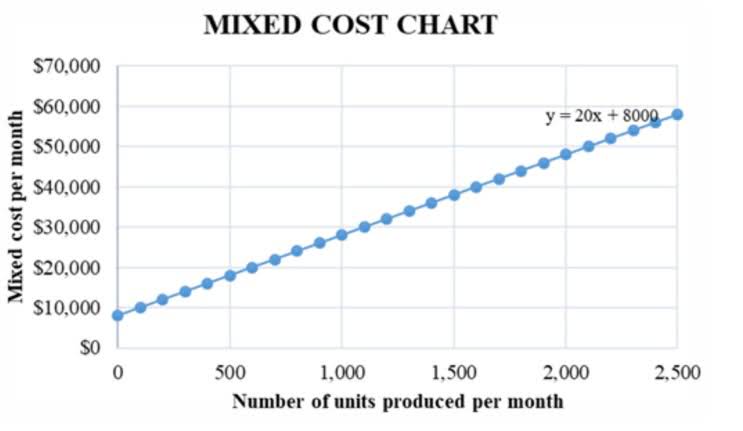
Generally, a ratio of 2 or higher is considered adequate to protect the creditors’ interest in the firm. A ratio of less than 1 means the company is likely to have problems in paying interest on its borrowings. Download our free income statement Excel times interest earned ratio template to easily track your revenue, expenses, and profits—all in one place. Interest Expense is the total cost a company incurs in a specific time frame (usually annually) for its accrued debt. The TIE ratio is an essential tool for businesses to use to predict their future financial stability and incorporate into their operational strategies. It’s essential for companies to understand the TIE ratio, its importance, and how to use this calculation, as it illuminates a company’s fiscal fortitude against obligations.
Times Interest Earned (TIE) Ratio Calculator
However, the TIE ratio is an indication of a company’s relative freedom from the constraints of debt. However, a company noticing that it has a ratio below one must carefully assess it’s business operations and priorities as it does not generate enough earnings to pay every dollar of interest and debt. A poor interest coverage ratio, such as below one, means the company’s current earnings are insufficient to service its outstanding debt. The chances of a company being able to continue to meet its interest expenses on an ongoing basis are doubtful.
- Let’s look at an example to better illustrate the interest earned time ratio.
- To better understand the TIE, it’s helpful to look at a times interest earned ratio explanation of what this figure really means.
- When she’s not writing, Barbara likes to research public companies and play Pickleball, Texas Hold ‘em poker, bridge, and Mah Jongg.
- Both figures in the above formula can be obtained from the income statement of a company.
- It doesn’t consider principal repayments or non-operating income fluctuations.
- Debts may include notes payable, lines of credit, and interest obligations on bonds.
Can the Times Interest Earned Ratio be Negative?
- In other words, we are looking for companies that are currently earning (before paying interest and taxes) at least three times what they have to pay in interest.
- The TIE ratio is a barometer of financial leverage and a tool for making informed decisions about handling outstanding debts and planning business operations over time.
- When analyzing a company’s financial health, the balance sheet is one of the most important documents.
- Creditors specifically can use the TIE ratio when deciding whether to extend financing, the appropriate size of the loan, and the interest rate to charge.
- Companies with TIE ratios below 1.0 face immediate solvency concerns, as they’re not generating sufficient earnings to cover their interest obligations.
- As a result, the ratio provides an early warning that a company may need to pay off existing debts before taking on new ones.
- Company B may not be in a position to take on any additional debt obligations.
EBIT represents all profits that the business has taken in for the accounting period in question, without factoring in any tax payments, interest, or other elements. TIE focuses on interest coverage, while debt-to-equity compares total debt to shareholder bookkeeping equity. Liberated Stock Trader, founded in 2009, is committed to providing unbiased investing education through high-quality courses and books.
Cyclical Industry Example

A creditor has extracted the following data from the income statement of PQR and requests you to compute and explain the times interest earned ratio for him. The TIE ratio is a barometer of financial leverage and a tool for making informed decisions about handling outstanding debts and planning business operations over time. With such a ratio, potential investors might exercise caution, given the company’s limited ability to withstand financial turbulence while meeting its debt obligations. The TIE Outsource Invoicing ratio also informs stakeholders whether a company can afford to take on more debt. Firms that demonstrate a solid ability to cover their periodic debt payments and have a high coverage ratio may be better positioned to increase their financial leverage safely. However, a company with an excessively high TIE ratio could indicate a lack of productive investment by the company’s management.

The following FAQs provide answers to questions about the TIE/ICR ratio, including times interest earned ratio interpretation. It is necessary to understand the implications of a good times interest earned ratio and what is means for the entity as a whole. When the times earned interest ratio is comfortably above 1, you can feel confident that the firm you’re evaluating has more than enough earnings to support its interest expenses. You can now use this information and the TIE formula provided above to calculate Company W’s time interest earned ratio. EBIT is used primarily because it gives a more accurate picture of the revenues that are available to fund a company’s interest payments.


The ratio indicates how many times a company can pay interest with its before-tax income. In other words, a ratio of 4 means that a company makes enough income to pay for its total interest expense 4 times over. Said another way, this company’s income is 4 times higher than its interest expense for the year.
What effect will issuing more bonds have on the times interest earned ratio over time?

TIE helps lenders understand the financial health of a business it is considering lending funds to. Adopting these strategies can fortify a company’s TIE ratio, underlining its ability to leverage finances and ensure consistent revenue. However, the benchmark can vary since certain capital-intensive industries may have norms lower than 2.5 due to their substantial debt loads for funding operations. Most financial analysts consider a TIE ratio of at least 2.5 as a good benchmark, providing sufficient cushion to handle potential earnings fluctuations. Based on this TIE ratio — hovering near the danger zone — lending to Dill With It would probably not be deemed an acceptable risk for the loan office. Again, there is always more that goes into a decision like this, but a TIE ratio of 2.5 or lower is generally a cause for concern among creditors.